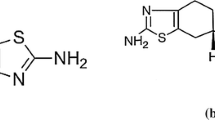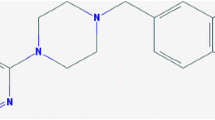Abstract
Recent studies have suggested that initial dopamine agonist therapy with pramipexole or ropinirole may slow the progression of Parkinson’s disease (PD) and also reduce the subsequent risk of levodopa motor complications. This presumed effect on PD progression, however, could be artifactual, resulting from the influence of chronic drug treatment on regulation of dopamine system proteins. With respect to levodopa motor complications, there is no dispute that pramipexole and ropinirole are effective in reducing levodopa dyskinesias and motor fluctuations; however, it is not clear that they must be started early, as opposed to initiation only after the levodopa complications develop. Levodopa therapy has numerous advantages that include greater efficacy, much lesser expense, simpler administration, and a lower frequency of hallucinosis and somnolence. Carbidopa/levodopa, pramipexole, and ropinirole are all appropriate first choices in the treatment of PD.
Similar content being viewed by others
References and Recommended Reading
Ahlskog JE, Muenter MD: Frequency of levodopa-related dyskinesias and motor fluctuations as estimated from the cumulative literature. Mov Disord 2001, 16:448–458.The risk of either dyskinesias or motor fluctuations is approximately 40% after 4 to 6 years of levodopa treatment. However, these are incidence figures and do not take into account that these motor complications may be trivial or abolished with levodopa dose adjustments.
Apaydin H, Ahlskog JE, Parisi JE, et al.: Parkinson disease neuropathology: later-developing dementia and loss of the levodopa response. Arch Neurol 2002, 59:102–112.
Olanow CW: Oxidation reactions in Parkinson’s disease. Neurology 1990, 40:32–37.
Fahn S, Cohen G: The oxidant stress hypothesis in Parkinson’s disease: evidence supporting it [review]. Ann Neurol 1992, 32:804–812.
Ahlskog JE: Parkinson’s disease: medical and surgical treatment. Neurol Clin 2001, 19:579–605.
Agid Y, Ahlskog E, Albanese A, et al.: Levodopa in the treatment of Parkinson’s disease: a consensus meeting. Mov Disord 1999, 14:911–913.
Schrag A, Ben-Shlomo Y, Brown R, et al.: Young-onset Parkinson’s disease revisited-clinical features, natural history, and mortality. Mov Disord 1998, 13:885–894.
Muenter MD, Ahlskog JE: Dopa dyskinesias and fluctuations are not related to dopa treatment duration. Ann Neurol 2000, 48:464.
Mizuno Y, Kondo T, Narabayashi H: Pergolide in the treatment of Parkinson’s disease. Neurology 1995, 45:S13-S21.
Rinne UK, Bracco F, Chouza C, et al.: Early treatment of Parkinson’s disease with cabergoline delays the onset of motor complications. Results of a double-blind levodopa controlled trial. Drugs 1998, 55:23–30.
Rascol O, Brooks D, Korczyn AD, et al.: A five-year study of the incidence of dyskinesia in patients with early Parkinson’s disease who were treated with ropinirole or levodopa. N Engl J Med 2000, 342:1484–1491.Clinical trials comparing initial dopamine agonist with levodopa therapy consistently have reported a lower subsequent frequency of dyskinesias and motor fluctuations with agonist treatment. Levodopa, however, has consistently been significantly more efficacious.
Parkinson Study Group: A randomized controlled trial comparing the agonist pramipexole with levodopa as initial dopaminergic treatment for Parkinson’s disease. JAMA 2000, 284:1931–1938.Clinical trials comparing initial dopamine agonist with levodopa therapy consistently have reported a lower subsequent frequency of dyskinesias and motor fluctuations with agonist treatment. Levodopa, however, has consistently been significantly more efficacious.
Whone AL, Remy P, Davis MR, et al.: The REAL-PET study: slower progression in early Parkinson’s disease treated with ropinirole compared with l-dopa. Neurology 2002, 58:A82-A83.Chronic ropinirole therapy resulted in a slower rate of decline of striatal 18F-dopamine compared with levodopa treatment.
Holloway RG, for the Parkinson Study Group: Pramipexole versus levodopa as initial treatment for Parkinson disease: a four-year randomized controlled trial. Neurology 2002, 58:A81-A82.Clinical trials comparing initial dopamine agonist with levodopa therapy consistently have reported a lower subsequent frequency of dyskinesias and motor fluctuations with agonist treatment. Levodopa, however, has consistently been significantly more efficacious.
Uitti RY, Ahlskog JE: Comparative review of dopamine receptor agonists in Parkinson’s disease. Cent Nerv Syst Drugs 1996, 5:369–388.
Parkinson Study Group: Dopamine transporter brain imaging to assess the effects of pramipexole vs levodopa on Parkinson disease progression. JAMA 2002, 287:1653–1661. Chronic pramipexole therapy was associated with a significantly slower rate of decline of striatal 123I-à-CIT uptake, as assessed by single photon emission computed tomography. Those treated with pramipexole alone had results similar to those who supplemented their pramipexole treatment with levodopa. 123I-β-CIT binds to the dopamine transporter, a biomarker of dopaminergic neurons.
Kimmel HL, Joyce AR, Carroll FI, Kuhar MJ: Dopamine D1 and D2 receptors influence dopamine transporter synthesis and degradation in the rat. J Pharmacol Exp Ther 2001, 298:129–140.Dopamine transporter is a highly regulated protein with turnover influenced by dopamine agonist and levodopa administration.
Lee CS, Samii A, Sossi V, et al.: In vivo positron emission tomographic evidence for compensatory changes in presynaptic dopaminergic nerve terminals in Parkinson’s disease. Ann Neurol 2000, 47:493–503.
Uhl GR, Walther D, Mash D, et al.: Dopamine transporter messenger RNA in Parkinson’s disease and control substantia nigra neurons. Ann Neurol 1994, 35:494–498.
Harrington KA, Augood SJ, Kingsbury AE, et al.: Dopamine transporter (DAT) and synaptic vesicle amine transporter (VMAT2) gene expression in the substantia nigra of control and Parkinson’s disease. Brain Research. Mol Brain Res 1996, 36:157–162.
Joyce JN, Smutzer G, Whitty CJ, et al.: Differential modification of dopamine transporter and tyrosine hydroxylase mRNAs in midbrain of subjects with Parkinson’s, Alzheimer’s with parkinsonism, and Alzheimer’s disease. Mov Disord 1997, 12:885–897.
Zhang L, Coffey LL, Reith ME: Regulation of the functional activity of the human dopamine transporter by protein kinase C. Biochem Pharmacol 1997, 53:677–688.
Vaughan RA, Huff RA, Uhl GR, Kuhar MJ: Protein kinase Cmediated phosphorylation and functional regulation of dopamine transporters in striatal synaptosomes. J Biol Chem 1997, 272:15541–15546.
Pristupa ZB, McConkey F, Liu F, et al.: Protein kinase-mediated bidirectional trafficking and functional regulation of the human dopamine transporter. Synapse 1998, 30:79–87.
Meiergerd SM, Patterson TA, Schenk JO: D2 receptors may modulate the function of the striatal transporter for dopamine: kinetic evidence from studies in vitro and in vivo. J Neurochem 1993, 61:764–767.
Batchelor M, Schenk JO: Protein kinase A activity may kinetically upregulate the striatal transporter for dopamine. J Neurosci 1998, 18:10304–10309.
Guttman M, Stewart D, Hussey D, et al.: Influence of L-dopa and pramipexole on striatal dopamine transporter in early PD. Neurology 2001, 56:1559–1564.Levodopa and pramipexole differentially affected striatal 123I-à-CIT single photon emission computed tomography outcomes in a 6-week trial, suggesting a pharmacologic effect on dopamine transporter regulation.
Ahlskog JE, Uitti RJ, O’Connor MK, et al.: The effect of dopamine agonist therapy on dopamine transporter imaging in Parkinson’s disease. Mov Disord 1999, 14:940–946.
Innis RB, Marek KL, Sheff K, et al.: Effect of treatment with Ldopa/ carbidopa or L-selegiline on striatal dopamine transporter SPECT imaging with [123I]beta-CIT. Mov Disord 1999, 14:436–442.
Nurmi E, Bergman J, Eskola O, et al.: Reproducibility and effect of levodopa on dopamine transporter function measurements: a [18F]CFT PET study. J Cereb Blood Flow Metab 2000, 20:1604–1609.
Ballard PA, Tetrud JW, Langston JW: Permanent human parkinsonism due to 1-methyl-4-phenyl-1,2,3,6-tetrahydropyridine (MPTP): seven cases. Neurology 1985, 35:949–956.
Cromwell WC, Ziajka PE: Development of tachyphylaxis among patients taking HMG CoA reductase inhibitors. Am J Cardiol 2000, 86:1123–1127.
Locatelli S, Lutjohann D, Schmidt HH, et al.: Reduction of plasma 24S-hydroxycholesterol (cerebrosterol) levels using high-dosage simvastatin in patients with hypercholesterolemia. Evidence that simvastatin affects cholesterol metablism in the human brain. Arch Neurol 2002, 59:213–216.
Torstenson R, Hartvig P, Langstrom B, et al.: Differential effects of levodopa on dopaminergic function in early and advanced Parkinson’s disease. Ann Neurol 1997, 41:334–340.
Ekesbo A, Rydin E, Torstenson R, et al.: Dopamine autoreceptor function is lost in advanced Parkinson’s disease. Neurology 1999, 52:120–125.
Knudsen GM, Hasselbalch S, Toft PB, et al.: Blood-brain barrier transport of amino acids in healthy controls and in patients with phenylketonuria. J Inherited Metab Dis 1995, 18:653–664.
Boomsma F, Meerwaldt JD, Man in’t Veld AJ, et al.: Treatment of idiopathic parkinsonism with L-dopa in the absence and presence of decarboxylase inhibitors: effects on plasma levels of L-dopa, dopa decarboxylase, catecholamines and 3-Omethyl-dopa. J Neurol 1989, 236:223–230.
Ward CD, Trombley IK, Calne DB, Kopin IJ: L-dopa decarboxylation in chronically treated patients. Neurology 1984, 34:198–201.
Durso R, Evans JE, Josephs E, et al.: Variable absorption of carbidopa affects both peripheral and central levodopa metabolism. J Clin Pharmacol 2000, 40:854–860.
Frucht S, Rogers JD, Greene PE, et al.: Falling asleep at the wheel: motor vehicle mishaps in persons taking pramipexole and ropinirole. Neurology 1999, 52:1908–1910.
Miyasaki JM, Martin W, Suchowersky O, et al.: Practice parameter: initiation of treatment for Parkinson’s disease: an evidence-based review. Report of the Quality Standards Subcommittee of the American Academy of Neurology. Neurology 2002, 58:11–17.
Author information
Authors and Affiliations
Rights and permissions
About this article
Cite this article
Ahlskog, J.E. Parkinson’s disease: Is the initial treatment established?. Curr Neurol Neurosci Rep 3, 289–295 (2003). https://doi.org/10.1007/s11910-003-0005-1
Issue Date:
DOI: https://doi.org/10.1007/s11910-003-0005-1




